Last updated on July 8th, 2024
Featured image: Gordes, in the Luberon, Provence, is one of France’s most beautiful villages | Image by Neil Gibbons from Pixabay
Going solo on a small group journey with women in Provence
by Leyla Alyanak
If you dream of hilltop villages, olive groves, lavender fields and local wineries, chances are you’re envisioning the Luberon, a small mountainous patch that stretches 60km/37miles between the Alps and the Mediterranean, somewhere east of Avignon and north of Aix-en-Provence in France.
The Luberon is all about the journey, about stopping to smell the flowers – literally. It’s about pausing to gambol along cedar forests and ancient villages, watching experts turn nature into products we can use like lavender, grapes and olives. If you haven’t heard of the Luberon, perhaps it’s because there are no major attractions here, no Eiffel Tower and no Mont-Saint-Michel. When you read Peter Mayle’s classic “A Year in Provence”, you’ll know the region I’m talking about.
When European Experiences invited me to join their Luberon Experience Women’s Week, I hesitated for a microsecond – and that was only because I’d never been on a group tour before. I usually travel solo and independently, and the idea of spending an entire week with the same people on a pre-arranged schedule made me apprehensive. I’m glad I went with an open mind, because I discovered places I didn’t know, while bonding with a diverse group of women I would never have met otherwise. For those of us accustomed to travelling solo and forging our own path, a reputable small group tour (mine had only ten women) is an excellent way to test the waters of group travel. For once, I had nothing to organize, and our congenial group – women mostly in their 60s and 70s, some with friends, some solo – gelled around art, food, sustainability, and the sheer natural beauty of Provence.
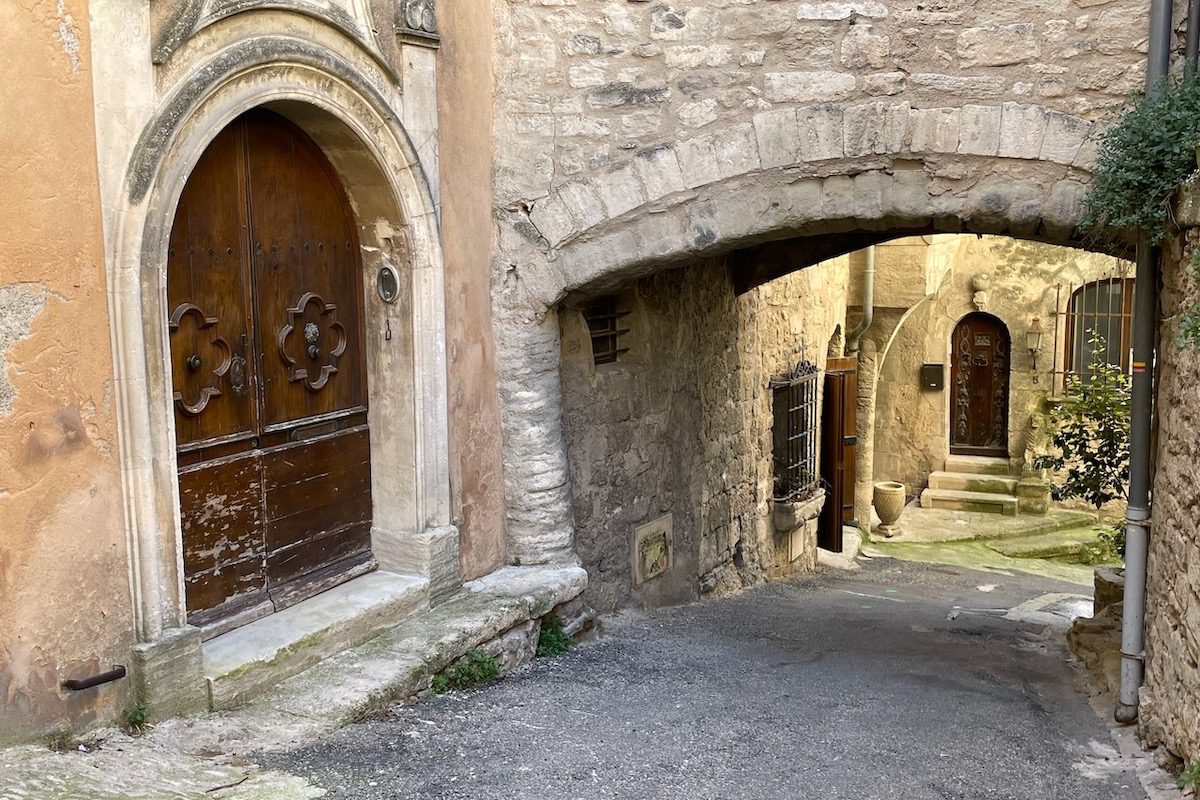
The ancient streets of the hilltop village of Bonnieux / Photo by Leyla Alyanak
A home base in the village of Bonnieux
Our base for a week is the village of Bonnieux, in the heart of the Luberon, so no packing and unpacking every other day. Guests stay at a 10-room, family-owned hotel located right in the village with a beautiful garden and swimming pool. Each morning, after a delightful breakfast, we radiate outwards from the 250-year-old Clos du Buis, a “hotel de charme” (and former bakery), driving short distances to our two or three destinations, leaving us plenty of time to explore and enjoy. Some sites are close enough to reach on foot, although some of us opt to ride instead.
Our tour leader, Kathy Wood, fell in love with the Luberon on a vacation in 2003 and has a home in Bonnieux. She is well known in the village and most locals we crossed would stop to greet her with shouts of “Kateeee, Kateee!” and a kiss on each cheek. One of those friends, a retired doctor, opened her house in Bonnieux to us, showing us around cellars that dated back to the 6th-century invasions.
It is believed members of the Knights Templar, a wealthy Catholic military order, might have lived within these walls until their order was banned in 1307 by King Philippe IV. Founded during the Crusades, the order had become too strong and too wealthy for its own good.
Another of Kathy’s many friends, an expat couple from Australia, had us over for an “apéro dinatoire”, which translates to a “dinner aperitif”, in other words, enough small servings to fill you up. As we watched the breathtaking sunset from their lovingly restored house, we nibbled blinis with cheese and caramelized onions, salmon on cucumber, two kinds of flaky cheese pastries, and plenty more I was too engrossed in sampling to remember.
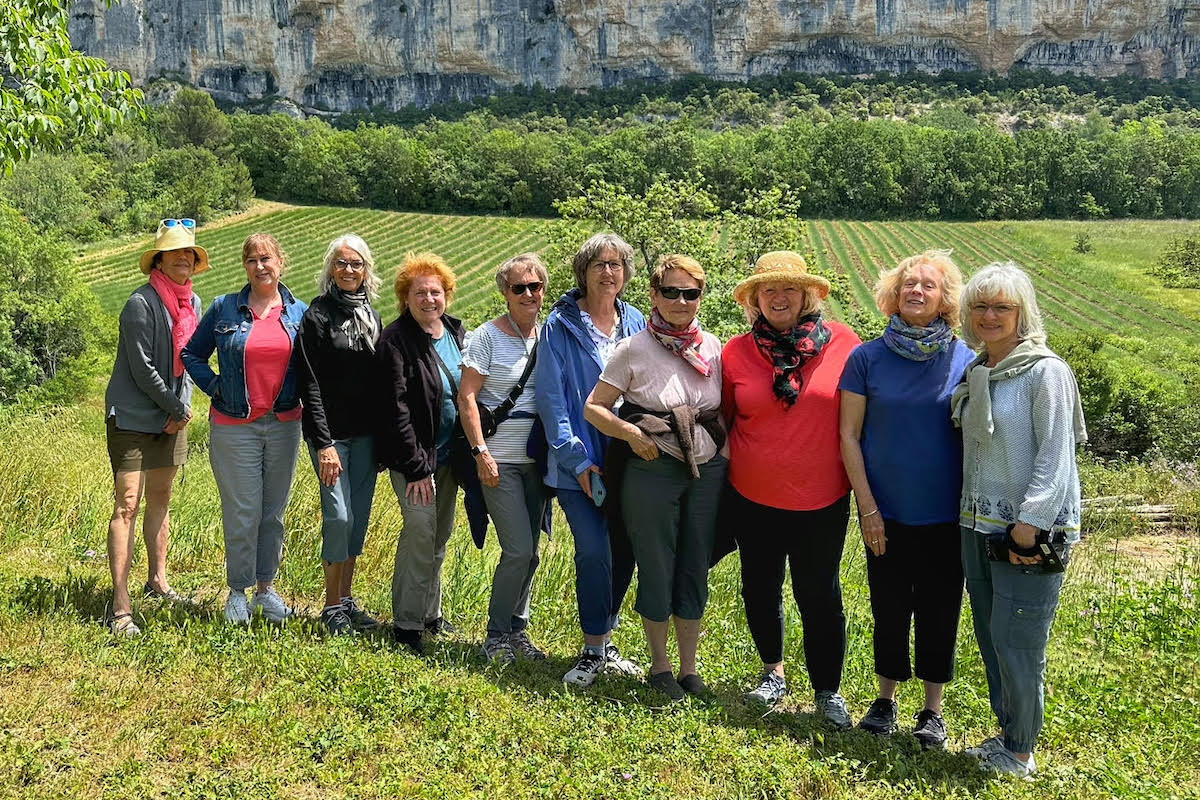
The group of women travelling with European Experiences on their Luberon Experience trip in June 2024, including European Experiences founder Kathy Wood, third from the right / Photo by Christian Linke
Visiting the most beautiful villages in France: Gordes and Roussillon
France being a country that loves lists, “best of’s” and competitions, there is a semi-official list of “most beautiful villages in France”. We visit two of the five listed in the Luberon during our week, both of which I know and love and am thrilled to see again.
When I first saw Gordes, a first hilltop village in the Luberon in Provence, France many years ago, I was struck silly with love. Over time, I returned, widening my exploration to other villages. I visited in every season, even in the dead of winter, and in every weather, with the mighty mistral winds blowing or the heat of summer slamming me to the ground. Gordes is surrounded by characteristic dry stonework which catches your eye as you drive up. The village is remarkably old – when the Romans arrived during the 2nd century BCE, the hilltop was already occupied by the Vordenses, a Celto-Ligurian tribe.
The center of town is crowned by a towering fortress, parts of which have been around since 1031. On Tuesday mornings, the castle becomes a backdrop for the village market, a lively event that covers much of the town. Once you’ve visited the stalls and bought the inevitable scarf or two (or six, in my case), you can explore the narrow cobblestoned streets and the broad vistas of the valley below. Stop for coffee on the terrace of the Cercle Républicain, a café where revolutionaries once plotted and where members of the Résistance were welcomed during World War II.
The second “most beautiful” village, Roussillon, was once an ochre-mining center. It left behind a spectacular range of brightly-hued hills that reminded some of our group of the rock formations in Sedona or the state of Utah. Having never been to either, I can only guess how beautiful those must be.
Start your visit by following the Ochre Trail for either 35 or 50 minutes depending on which loop you choose, but be ready for plenty of stairs (both up and down). Avoid wearing white shoes unless you have your heart set on bright yellow footwear (I’m still picking dust off mine).
Then make your way down to the village, each of its houses painted in a town-approved shade of ochre – if you don’t like the ochre palette, you’re out of luck!

This characteristic dry stonework – without the use of mortar – can be seen throughout Gordes / Photo by Leyla Alyanak
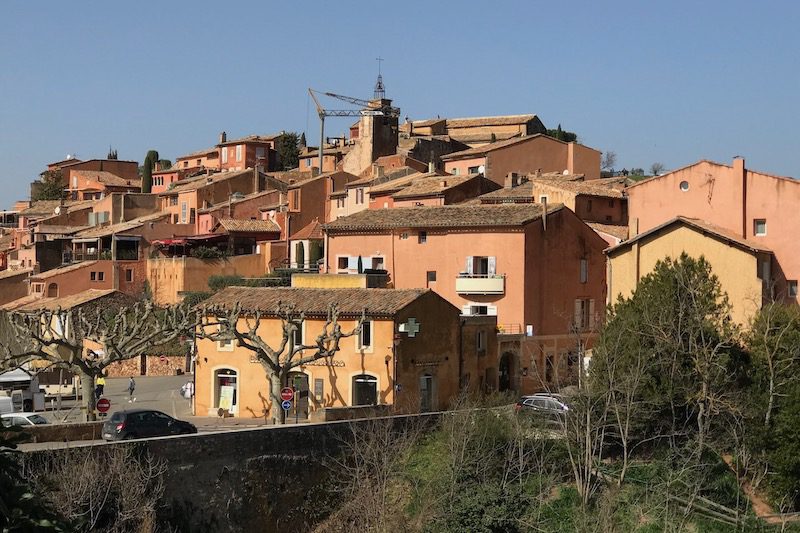
The ochre streets of Roussillon, where you can only paint your house certain approved shades / Photo by Leyla Alyanak
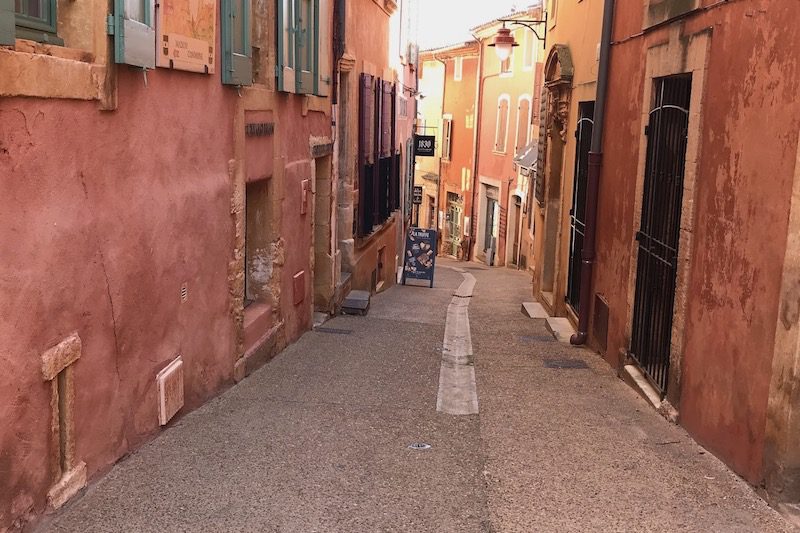
The ochre streets of Roussillon, where you can only paint your house certain approved shades / Photo by Leyla Alyanak
Read More: Three of France’s “Most Beautiful Villages”
A few tucked-away villages: Goult , Lacoste and Saignon
While Gordes and Roussillon wear their “most beautiful” mantle with pride, there are other, smaller villages throughout the Luberon that are as ravishing but far less frequented.
Our first of these was Goult, with just over 1000 inhabitants, whose peaceful streets are an invitation to stroll. Locals call it ‘the hidden village’, possibly because fewer people ever make it up here.
Head to the top of the village and you’ll discover something unexpected: a windmill, one of just a handful in Provence. Once a working mill, in the mid-20th century, it became an observation center for astronomers keen to find clear, cloudless skies. Today, it is under restoration.
Walk around its side and you’ll see an unusual tree carving: it is the work of the village sculptor, Jacques Fréjabue, nicknamed Coucoune, whose grandfather was a shoemaker and taught Coucoune how to carve wood. Whenever you see a wood carving in the village (and there are quite a few), you’ll know they’re his.
Only a ten-minute drive away is Lacoste, famous for its inhabitants, past and present. The Château de Lacoste was owned in the 18th century by the nefarious Marquis de Sade, the aristocratic libertine and pornographer who was eventually jailed for his sex crimes and graphic prose.
More recently, in 2001, fashion designer Pierre Cardin bought the castle, along with plenty of other village houses, hoping to turn Lacoste into a major art and cultural center. He attracted visitors to his festivals and galleries but also upset a lot of villagers along the way. A controversial golf course project was shelved after residents staged a massive protest.
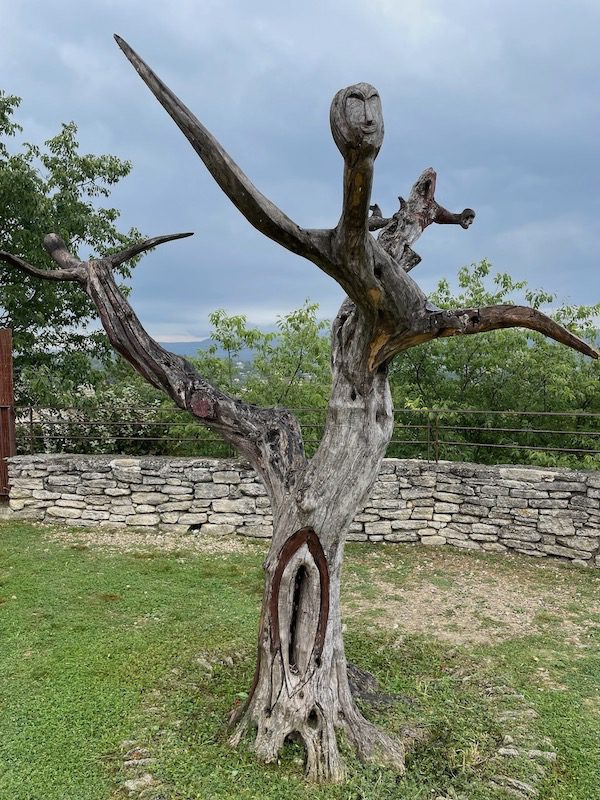
One of the many tree sculptures of the village of Goult, carved by local artist “Coucoune” / Photo by Leyla Alyanak
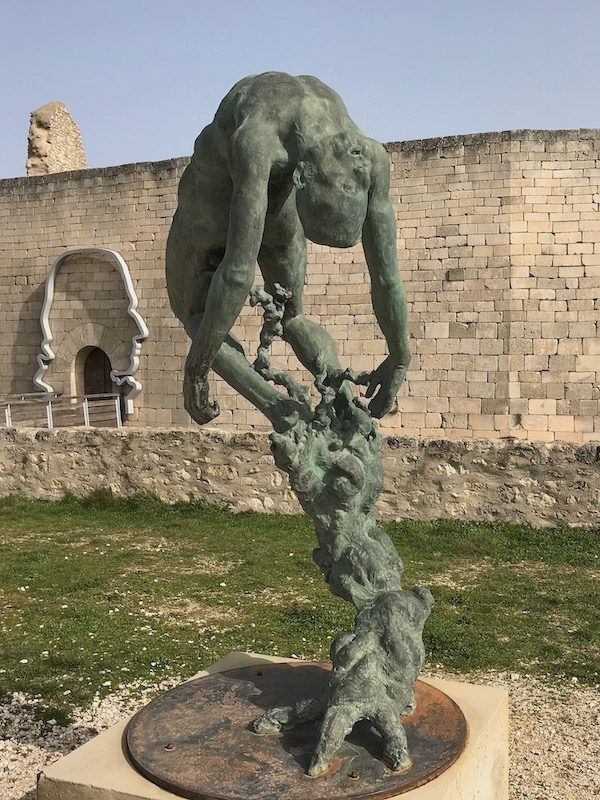
A number of sculptures grace the grounds of the castle of Lacoste / Photo by Leyla Alyanak
By the time Cardin died in 2020, he had bought and renovated some 50 village buildings, several of which were bought by SCAD, the Savannah College of Art and Design for its European campus. Wander around during the school year and the village is filled with students. Once the school year is over and they go home, many of their works remain, exhibited in the various spaces created for that purpose within Lacoste. Just be prepared for steep walks up the cobblestones, even more challenging if they’re wet!
The third “lesser-known” village we visited was Saignon, a hamlet whose restful atmosphere is an invitation to simply sit and listen. Few motor vehicles make it this far, and the sound of birds and the rustle of leaves and rose petals might be the nudge you need to pull out that sketchpad (as one of our group did, drawing on a bench while the rest of us walked).

The peaceful streets of the village of Lacoste in the Luberon, home of SCAD, the Savannah College of Art & Design / Photo by Leyla Alyanak
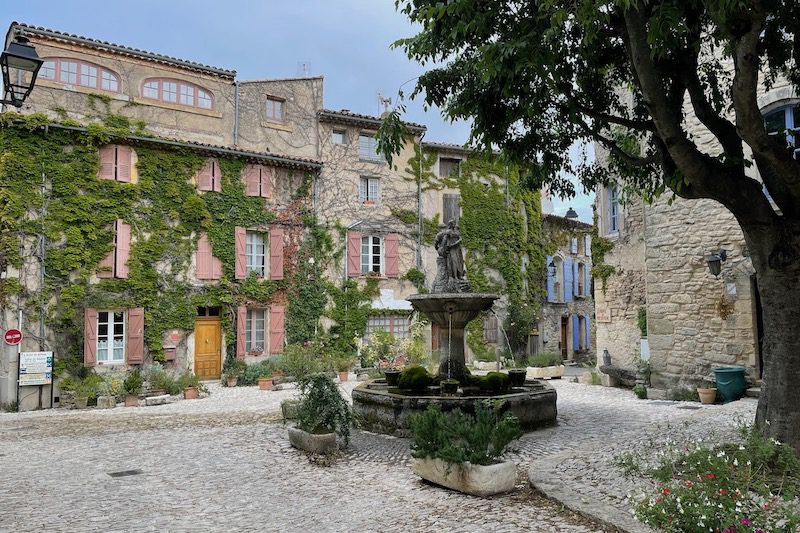
The less frequented but delightful village of Saignon / Photo by Leyla Alyanak
A personal touch in the Luberon
It is often said that a place is only as good as its people and there were times when I thought Kathy Wood, our guide and the owner of European Experiences, knew every single person in the Luberon. This personal touch meant that while we saw what others saw, we were also welcomed into homes and businesses like old friends.
One sunny day, we visited her friend Janice Jacquet, a long-time resident artist who had us over for a wonderful summer lunch of Salade Niçoise and showed us (after significant nudging) a few of the paintings she would soon unveil at a solo exhibition.
This was a women-only tour and most of the businesses we visited would be run by women, whose stories gave us the inside scoop on some of the oldest traditions of the Luberon.
One highlight was a visit to the Moulin du Calenquet, run by Anne Brun with her brother Gilles. Her family has farmed this land for five generations.
“This single olive tree produces three bottles of oil,” Brun explained as she led us through the groves. The trees around us were relatively new, the older ones having been wiped out by the great frost of 1956, when temperatures plunged to –18°C/0°F, far too cold for these Mediterranean trees.
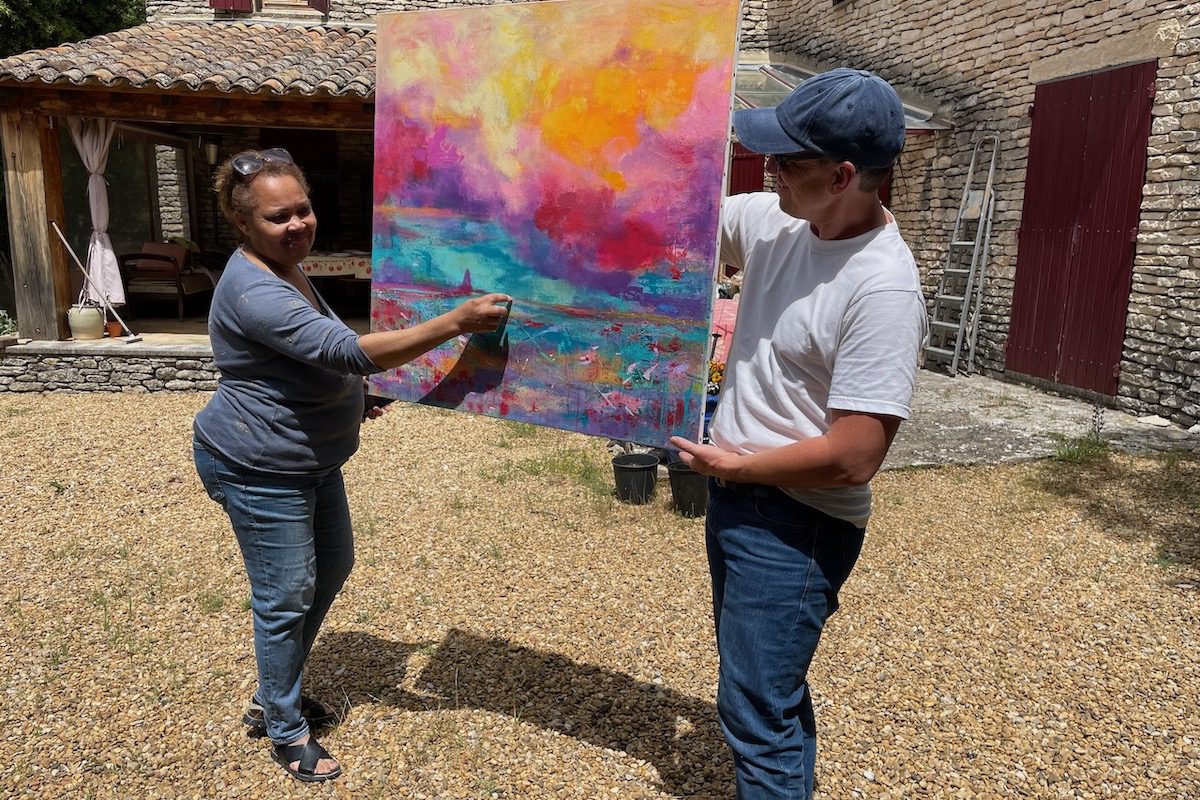
We taste a variety of oils, a little gingerly, having arrived just after breakfast, but surprisingly, olive oil on its own is perfectly palatable. My favourite is the “huile d’assemblage”, a mix of five olive oils. All are highly sought after and end up on tables as far afield as Dubai and Singapore, not to mention those of Michelin-starred chefs right here in France.
The Bruns have expanded into other preparations, including the famous Provençal olive tapenade, or olive paste, flavoured with lemon, or anchovies, or tomatoes, or chilies. They also concoct their own jams, highly original combinations of cherry/black olives, lemon/olive/ginger, orange/chocolate, and many others. Unable to choose, I buy a bunch, since they are available in tiny containers that are easy to pack.
We also visited Les Agnels, a fifth-generation lavender distillery owned by Véronique Agnel, whose ancestors began cutting wild lavender during the 18th century and distilling it in 1895. Here, we saw a demonstration of the various processes, from old-fashioned stills to the more modern, automated methods, but mostly, we breathed in the lavender, from the traditional fine officinalis to the sturdier lavendin. Everyone was fascinated by the plants’ many uses, whether in perfume or in oils used to treat such things as insect bites, muscle pains or arthritis. The ubiquitous lavender sachets were also available, made by a local group of handicapped artisans.
Another day, everyone trooped off to a wine-tasting visit at a local château which, being a non-drinker, I opted to forgo but the vineyard, too, was woman-managed and in the family for five generations. Those who did take part came back quite happy from their trip.

At the Agnels Distillery in the Luberon, learning all about the different kinds of lavender / Photo by Leyla Alyanak
Beyond the Luberon to Isle-sur-la-Sorgue
While the vast majority of excursions are within the confines of the Luberon, we would occasionally edge slightly beyond. One such foray was to the much-loved Sunday morning market in Isle-sur-la-Sorgue, a town beautifully set along the Sorgue River, waterwheels and all.
Its canals have earned it the nickname of Venise Comtadine, in reference to the Comtat Venaissin, the former Papal state to which the town belonged. For centuries, it was home to one of the Papal administration’s four Jewish “quarters”, a memory still visible in such things as street names, as in Place de la Juiverie, or ‘Jewish Square’.
What sets the Isle-sur-la-Sorgue market apart from many others is its antique dealers. Each Sunday, dozens set up bric-a-brac stalls along the river. This isn’t accidental: Isle-sur-la-Sorgue is known as the antiques flea market capital of France and one of the top three in Europe, attracting upwards of 100,000 people a year. Beyond the stalls, upmarket antique shops are spread among six “villages” and each year, since 1966, the town has hosted two international fairs, at Easter and again on 15 August.
Another visit I thoroughly enjoyed but which clashes with the image we have of the Luberon – perched villages, lavender fields, olive groves – was the Carrière des Lumières, an abandoned limestone quarry now used to project immersive art performances. These have caught on across France (they now exist in Paris and Bordeaux) and other countries, but this was the original.
Read More: Understanding French Culture Through Food
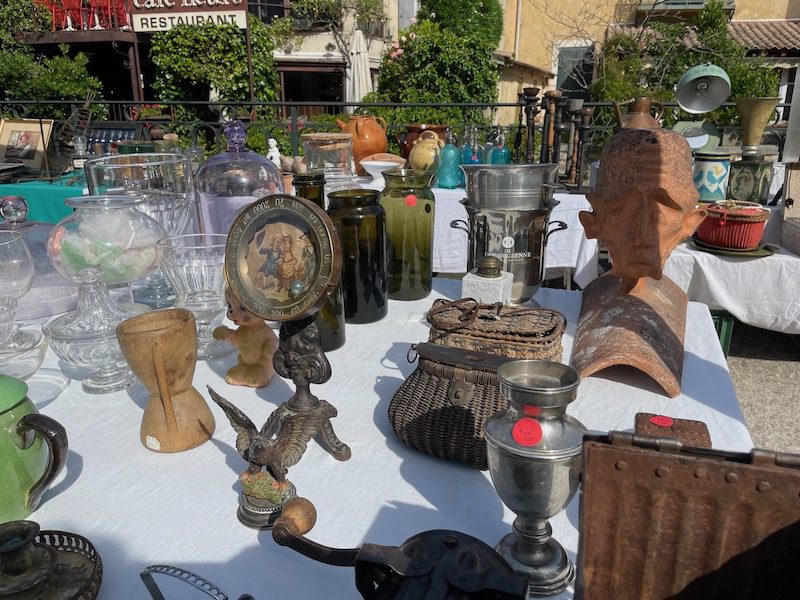
Each Sunday, the riverbanks of Isle-sur-la-Sorgue are home to a much-loved antiques market / Photo by Leyla Alyanak

The extraordinary light show of the Carrière des Lumières, a must-see when you visit Les Baux de Provence / Photo by Leyla Alyanak
The sanatorium is also the final stop along the Saint-Rémy art walk, lined with panels that depict van Gogh’s paintings against the scenery that might have inspired them.
Read More: How to Embrace a Slow Travel Mindset
A lasting memory
The Luberon is not an easy region to visit independently unless you have a car. Public transportation is scarce, geared mostly towards locals, not tourists. Other than driving, a tour is really the only way to get from place to place without wasting hours waiting for a bus that may or may not come. European Experiences hosts similar trips in other European destinations, mostly one week in one place in a village or small town in a beautiful area, giving you time to enjoy a slower form of travel while staying in one place.
Bonnieux turns out to be the perfect base. A medium-sized village with 1400 inhabitants, it is a typical hilltop village built in layers over centuries. Inhabitants first populated the plains below, clustered around the Roman-era Pont Julien. When they needed building materials, they climbed the hill to what was then a limestone quarry, carrying off its stones. But when the so-called Barbarians began to invade, villagers moved uphill for protection, carving the rocks to make their homes.
More “trip” than tour, this journey across the Luberon peeled its layers one at a time, introducing us to villages, personalities, foods and products all infused with local culture, an experience that left us all wanting to return. The pièce de résistance was the dazzling sunset, the sun flattening out against the clouds, bursting into ochres and reds and purples as it lowered itself into the horizon — creating a memory I won’t soon forget.
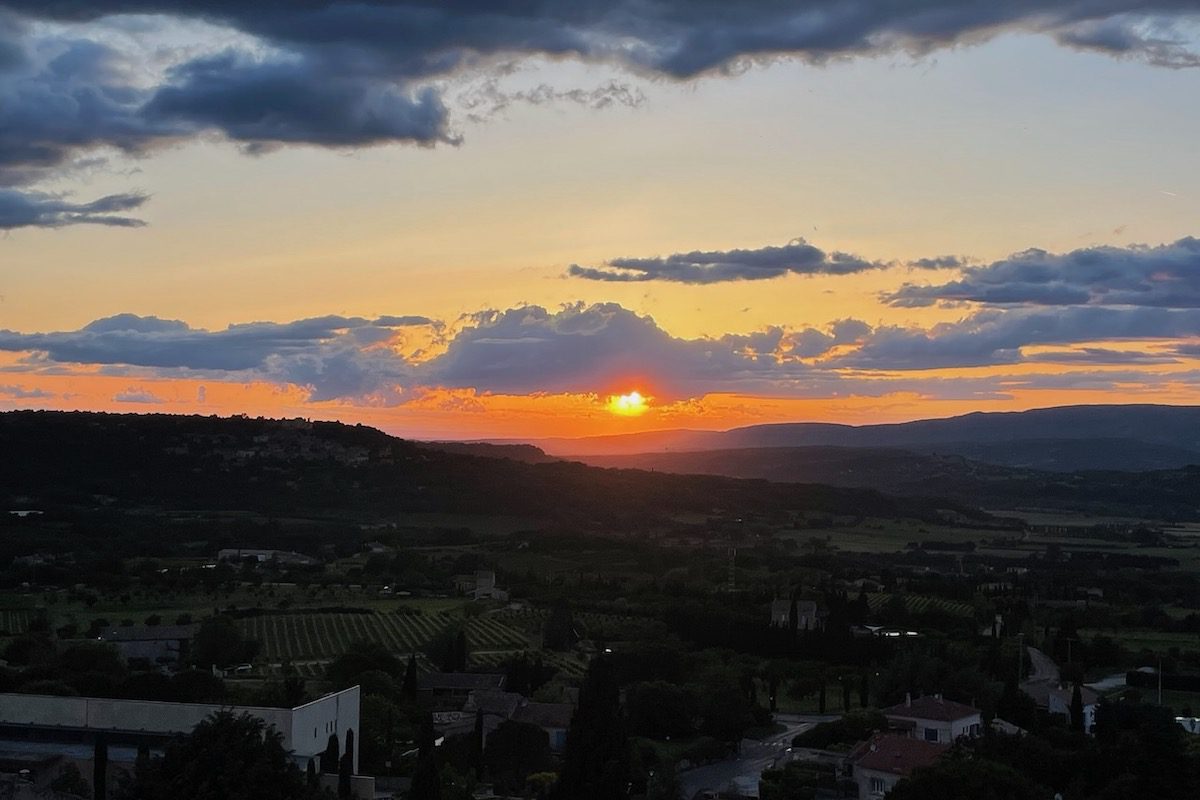
Watching the sun set over the mountains of the Luberon in Bonnieux / Photo by Leyla Alyanak
For this trip, I was a guest of European Experiences for their Luberon Experience Women’s Week. They did not review this article before publication.
More From France to Discover
A Solo Trip to the Basque Region: Bilbao, San Sebastian and Biarritz
The Basque region, straddling northern Spain and southern France, is an area often forgotten by travellers to Spain, but from the moment I arrived I fell in love with its cultural richness, natural beauty, and food.
Will Travel for Food: Food Tours for Solo Women
Not only do food tours give insight into a culture, they are a great way for solo women to connect with locals and other travellers.
Where to Stay in Paris: Recommendations From Solo Women
Women share their top choices on where to stay in Paris, France, including hotels, hostels, and affordable options across the city.

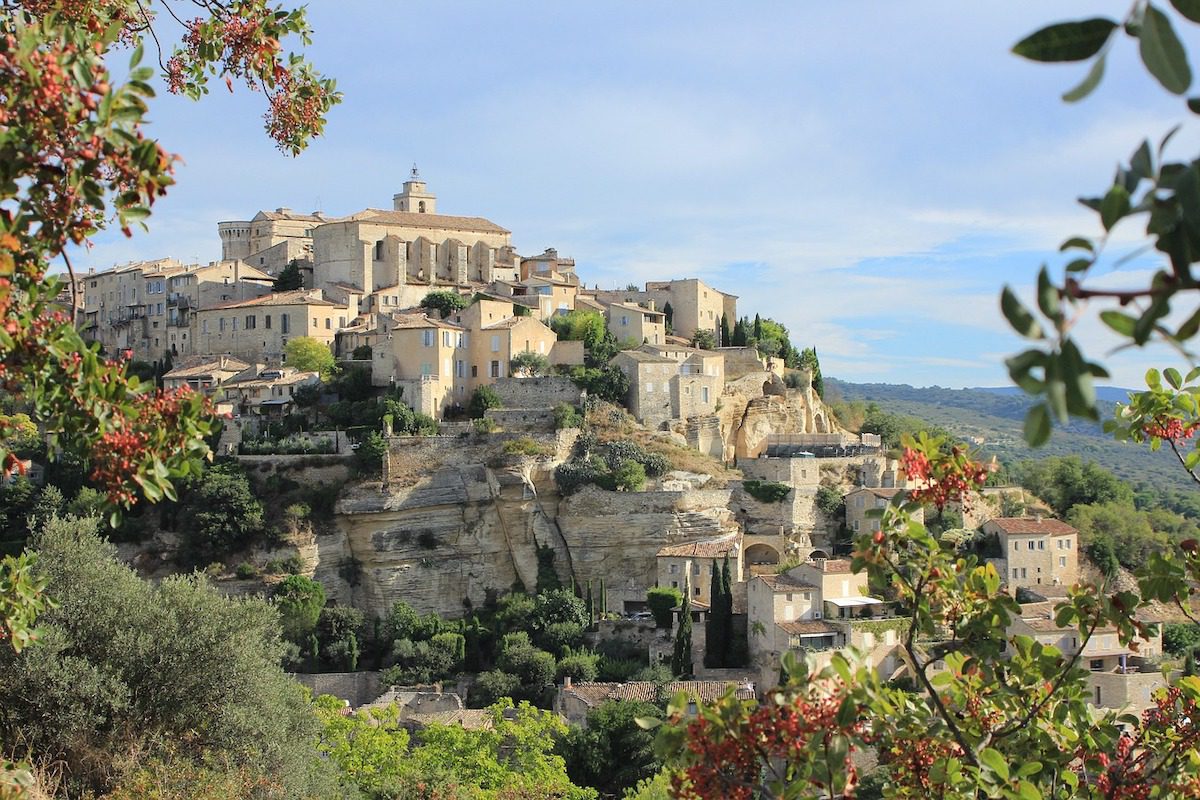



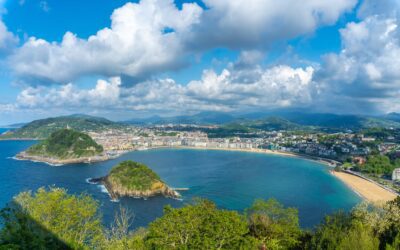

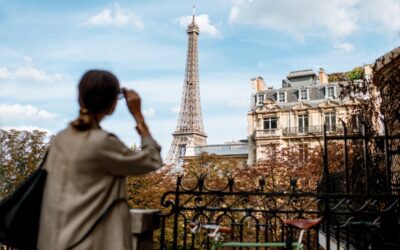
I was on this trip with Leyla! Her description brings back great memories and teaches me more about the places we visited than I realized when I was there.
Leyla has been travelling on her own since she was 16, and knows her stuff. I met her through professional channels first; it’s great to read about the group tour from her perspective, here!